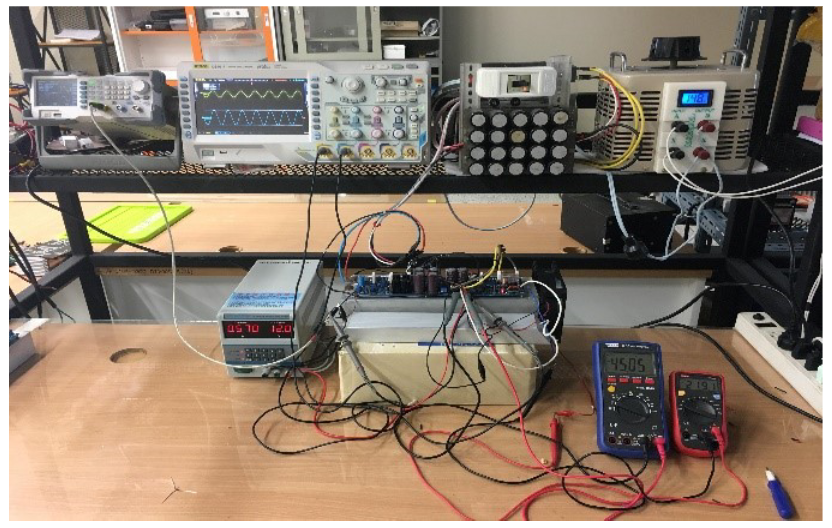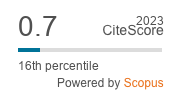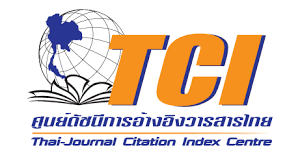Guidelines for the Development of Power Loss Reduction Circuits of Class A Audio Amplifiers using Appropriated Voltage Adjustment Technique with Small Input Signal
doi: 10.14456/mijet.2020.7
Keywords:
Class A amplifier, krell ksa-100s, Class TD AmplifierAbstract
Audio amplifiers are the classical, commonly used electronic circuits; especially, in the applications of high wattage amplifiers; where the Class A audio amplifiers are the most acceptable and have the best sound quality. However, they would have low rate of expansion, as well as, low efficiency. For example, the famous Class A circuit model: Krell KSA-100 that consists of power amplifiers with 3 pairs of composites using the power supply plus minus 45 volts can cause high current and high power consumption all the time, i.e., with input signal voltage is zero, the circuit generates a current flowing through the final power amplifier, 1-amp pair. This results in high total current to reach 3 amps or 137 watts at all times. The researcher will conduct research to reduce the power loss in such conditions by reducing the power supply voltage more the circuit is still ready to expand the audio signal effectively as previous. Experiment by adjusting the input voltage with AC power transformer, can be adjusting from 28 to 145 volts, to allow DC power to vary the voltage in the range of 10 and 45 volts. Input 100 mVp-p input signal, 1kHz Sine wave frequency at 8-ohm load and reduced the voltage from 45 volts until the output amplifier can still maintain the input signal. Experimental results show that when reducing the power supply voltage, the power loss is reduced accordingly. Where the output signal remains distorted as the input signal is not distorted. This article describes the techniques for adjusting the voltage appropriately for Class A audio amplifiers circuit and the study of the enhancement of Class A audio amplifiers with the technique to crease the TD circuit (Tracking Class D) or DC voltage distribution circuit for the final power expansion According to the size of the audio signal received the input using a 32-bit processor as an automatic control to develop Class A audio amplifiers for better performance.
References
J. H. Jeong, G. H. Kim, B. R. Min, C. H. Ahn and G. H. Cho, "A high efficiency class A amplifier accompanied by class D switching amplifier," PESC97. Record 28th Annual IEEE Power Electronics Specialists Conference, St. Louis, MO, USA, 1997, vol. 2, pp. 1210-1216, doi: 10.1109/PESC.1997.616906.
A. A. Caballero, “A Class-D-Tracking-Rail Class-A Audio Power Amplifier,” Ph.D. Thesis, Massachusetts Institute of Technology, 2004.
P. Rattha, W. Chamnanprai and A. Chareanme, “Design and Simulation of Digital Audio TD for Subwoofer Amplifier,” Proceedings of the 10th Conference of Electrical Engineering Network 2018 (EENET 2018), vol. 10, May 2018.
J. Hribik and M. Hruskovic, “Power Supply Source for Class TD Power Amplifiers,” 2007 17th International Conference Radioelektronika, pp.1-4, April 2007.
Yamahacorpolation, URL:https://www.yamaha.com/2/proaudio/ , 2018.
Krell Industries LLC, USA, http://www.krellonline.com/ products.html
D. Self, “Audio Power Amplifier Design Handbook,” 5th ed, ISBN: 978-0-240-52162-6, Oxford, UK
J. Werner, Johnny, S. V. G. Oliveira and A. Péres. "Design and Implementation of a DC-DC Flyback Converter to Feed a Class a Tube Amplifier,” XI Brazilian Power Electronics Conference, Natal, Brazil, pp. 992-996, 2011.
X. Zhang and L. Siek, "An 80.4% Peak Power Efficiency Adaptive Supply Class H Power Amplifier for Audio Applications," IEEE Transactions on Very Large Scale Integration (VLSI) Systems, vol. 25, no. 6, pp. 1954-1965, 2017.
A. E. Ginart, R. M. Bass, W. M. Leach and T. G. Habetler, "Analysis of the Class AD Audio Amplifier including Hysteresis Effects,” IEEE Transactions on Power Electronics, vol. 18, no. 2, pp. 679 – 685, 2003.
P.H. Mellor, S. P. Leigh and B. M. G. Cheetham, "Digital Sampling Process for Audio Class D, Pulse Width Modulated, Power Amplifiers," Electronics Letters, vol. 28, no. 1, pp. 56-58, 1992.
G. R. Walker, "A Class B Switch-Mode Assisted Linear Amplifier," IEEE Transactions on Power Electronics, vol. 18, no. 6, pp. 1278-1285, 2003.
C. H. MILLER, "High-Efficiency Amplification using Pulse Width Modulation", Proc. I. R. E. E., vol. 25, no. 5, pp. 314-323, 1964.
S. El-Hamamsy, "Design of High-Efficiency RF Class-D Power Amplifier," IEEE Transactions on Power Electronics, vol. 9, no. 3, pp. 297-308, 1994.
Introduction to the Class TD Technology. Technical Note Lab. Gruppen, http://www.labgruppen.com/Files/TechNotes/ClassTD_Technote_9.pdf , 2002.
X. Yong, Z. Fei, W. Yuanliang, M. Rui, S. Zheng and T. Lu, "Single Chip Design of Closed-Loop Class D Audio Power Amplifier," 2010 International Conference on Wireless Communications & Signal Processing (WCSP), Suzhou, China, pp. 1-5, 2010.
A. Nagari, "Design of Class-D Amplifier for Audio Portable Solutions," 2014 10th Conference on Ph.D. Research in Microelectronics and Electronics (PRIME), Grenoble, France, pp. 1-1, 2014.
V. Dhanasekaran, J. Silva-Martinez and E. Sanchez-Sinencio, "Design of Three-Stage Class-AB 16Ω Headphone Driver Capable of Handling Wide Range of Load Capacitance," IEEE Journal of Solid-State Circuits, vol. 44, no. 6, pp. 1734-1744, 2009.
L. Blaser and H. Franco, "Push-Pull Class-AB Transformerless Power Amplifiers," IEEE Transactions on Audio, vol. AU-11, no. 1, pp. 6-14, 1963.
R. A. R. Van Der Zee and E. A. J. M. Van Tuijl, "A Power-Efficient Audio Amplifier Combining Switching and Linear Techniques," IEEE Journal of Solid-State Circuits, vol. 34, no. 7, pp. 985-991, 1999.

Downloads
Published
How to Cite
Issue
Section
License
Copyright (c) 2020 Mahasarakham International Journal of Engineering Technology

This work is licensed under a Creative Commons Attribution-NonCommercial-NoDerivatives 4.0 International License.







